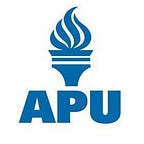By Dr. Gary L. Deel
Faculty Director, Wallace E. Boston School of Business, American Public University
This is the second article in a two-part series on the challenge of arm pump in motocross and how it can be mitigated.
In the first part of this series, I explained what arm pump is and why it’s such a problem for motocross racers. I also explained why the intuitive suggestion to train the forearm muscles doesn’t help at all, and in fact, makes the problem worse. But if training isn’t the answer, what is?
The Online Market Has Multiple Products Designed to Fix the Arm Pump Problem
As with most complex problems, there are a whole host of products available for sale online that purport to help racers mitigate or alleviate arm pump. Different types of stretching machines, braces, or forearm massagers claim to be effective at relieving some of the pressure blockage associated with arm pump and to allow riders to go harder and faster for longer periods of time. I have not purchased or used any of these products, so I cannot speak to the legitimacy of any of their claims.
Other Remedies for Fixing Arm Pump
One simple partial remedy for arm pump is actually a riding technique practiced by all experienced racers, and that is for the rider to actively “grip” the motorcycle with his legs as he is riding it — literally squeezing the bike between his knees. This riding stance helps with arm pump by reducing the load on the arms and hands in terms of hanging on. The legs of the rider are capable of sharing this work, keeping the rider upright and on the bike while the hands and arms do the important work of steering, controlling, and using the throttle, clutch, and front brake.
Another recommended remedy for reducing arm pump — and one that seems to mesh with the basic science of the problem — is promoting neovascularization in the body. Neovascularization is when the body forms new vessels for the purposes of transferring blood to and from the different parts of the body. As arm pump is a problem of too much blood in too tight a space, it stands to reason that if there were more ways for blood to get in and out of forearm muscles, neovascularization might help.
Cardiovascular exercise has been shown in clinical studies to promote neovascularization. So in between my motocross training days, I try to maintain a running routine — a combination of endurance runs and wind sprints — that gets my heart rate up for extended periods.
As I am only one person, I can’t in good scientific conscience claim any absolute proof of this regimen’s efficacy. But as a personal, anecdotal report, I can say that it seems to help with my own arm pump.
Some Professional Motocross Riders Resort to Surgery
Professional motocross riders are competing at the very edge of human ability, vying against the best talent in the world for the title of champion. And as such, it’s not surprising that many motocross riders have pursued a far more invasive — but potentially far more effective — solution to arm pump: a fasciotomy.
A fasciotomy is a surgical procedure, relatively new in sports medicine, through which the forearm fascia is endoscopically cut in order to allow the forearm muscle to expand as it fills with blood. Many professional riders, including my podcast guest AJ Catanzaro, have had this procedure. They have reported dramatic results in terms of their ability to ride at top speed for long periods of time.
But aside from the fact that a fasciotomy is a serious and costly surgery, it also has another drawback; the effects of the procedure are often temporary. Riders have reported that the fascia heals up over time, reverting them back to the limitations they had pre-surgery.
So if fasciotomy is going to be a lasting trend in professional motocross racing, it sounds like it will require riders to make repeated visits to the operating table in order to have the fascia reopened — at least until doctors can work out a way to make the effects permanent.
For most amateur riders, myself included, surgery is not on the table. I could afford it, but I have a family and a career, and I’m not so motivated to win my local races that I’d be willing to go under the knife for surgical enhancements to get there.
For me, my efforts will likely begin and end at cardio training to improve neovascularization in my arms. And who knows? I may someday decide to give one of the fancy forearm-fixer gadgets that companies sell a try as well.
Someday, perhaps an easier workaround for this problem will emerge. But we riders will all just have to “hang on” until then.
About the Author
Dr. Gary Deel is a Faculty Director with the School of Business at American Public University. He holds a J.D. in Law and a Ph.D. in Hospitality/Business Management. Gary teaches human resources and employment law classes for American Public University, the University of Central Florida, Colorado State University and others.
